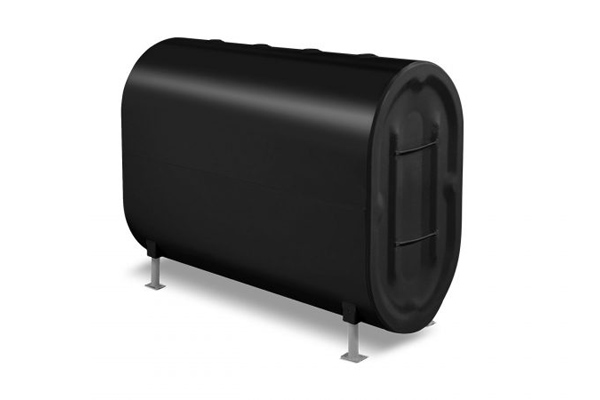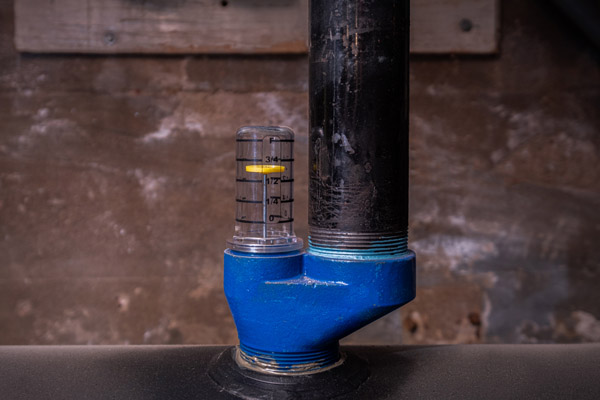A Guide To Understanding Your Heating Oil Tank Gauge

For residences equipped with heating oil systems, the arrival of winter poses no issue. The reason lies in the fact that the fuel is securely stored onsite in a dedicated tank, granting independence from external supply chains. This setup shields these homes from the supply disruptions often faced by those relying on natural gas. Yet, homeowners must be vigilant about their tank’s capacity, ensuring it aligns with their heating requirements. Regularly monitoring the fuel levels through the heating oil tank gauge is crucial. By doing so, homeowners can efficiently plan and schedule their heating oil deliveries.
Fundamentals of Float Gauges in an Oil Tank
The fundamental design of oil tanks has remained relatively unchanged for over a century, primarily because its simplicity is effective. These tanks are typically crafted from welded steel, featuring smooth, rounded corners for safety and durability. There’s a fill pipe to facilitate the addition of oil, and a vent pipe is included to manage air pressure.
Notably, beneath the vent pipe is a whistle, known as a vent alarm, which emits a sound when air is released, indicating proper functioning. Oil is transported from the tank to the burner through oil feed lines. A critical component of the tank is the float gauge, or heating oil tank gauge. This device has a hinged arm positioned beneath the surface, with one end floating atop the oil. The arm descends as the oil level decreases, triggering the gauge indicator disc to move correspondingly.
Locating the Oil Tank on the Property

Locating the oil tank is a crucial step for new homeowners who need to monitor their heating oil tank gauge. While in some cases the tank is visibly situated above ground, making it easily identifiable, in other instances, it may be discreetly placed in a basement or, less commonly, buried underground. Regardless of location, the external pipes and float gauge are designed to be reachable for maintenance and monitoring.
These tanks are substantial in size, with the standard model capable of holding 275 gallons or more of heating oil. However, for safety reasons, they are never filled to maximum capacity. Instead, they typically contain between 225 to 250 gallons of oil. The remaining space in the tank is left for air, allowing the heating oil room to expand safely without causing any issues.
Reading the Oil Tank Float Gauge
Once you have located the oil tank, focus on the heating oil tank gauge mounted on its top. This device is a transparent cylindrical structure featuring an indicator disc. The gauge is marked with standard labels such as ‘F’ for Full, 3/4, 1/2, 1/4, and ‘E’ for Empty. To ascertain the current level of heating oil in your tank, observe the position of the disc in relation to these markings.
First-time users might find themselves puzzled, unsure whether to consider the top or bottom of the disc for an accurate reading. However, it’s important to note that the float gauge is not designed for precision. The best approach is to note where the middle of the disc aligns with the marked levels.
Calculating the Remaining Fuel In Your Heating Oil Tank
Once you’ve gauged the approximate fuel level in your tank, the next step involves calculating the amount of remaining heating oil in gallons. This requires a straightforward calculation. Begin by determining the tank’s total capacity. For example, many residential tanks can hold 275 gallons. However, they are typically filled to a maximum of about 240 gallons to leave room for air and allow for the expansion of the oil.
Consequently, if the float gauge indicates the tank is 1/4 full, about 60 gallons of heating oil are left (240 gallons x 0.25). While this amount could last several weeks, it’s advisable not to delay ordering a refill. A useful guideline is to arrange for a heating oil delivery when your tank reaches approximately 30% capacity.
Inspecting for Possible Malfunction in the Oil Tank Gauge
The float gauge in your oil tank is designed to estimate fuel levels, but it’s not always accurate, especially if the float mechanism is faulty. Remove the gauge’s case and gently push the float down to test it. If it doesn’t rise back up by itself, this indicates a malfunction, typically necessitating professional repair.
Such issues often arise in older tanks due to wear and tear. The float’s arm might get stuck against the tank’s side, or the float itself could be hindered by a build-up of sludge, impairing its functionality. Regular inspection is vital to ensure the gauge operates correctly.
Dealing with a Malfunctioning Oil Tank Gauge

In cases where your oil tank’s gauge is broken, or if your tank never had one, you can use manual methods to measure the fuel level. This involves using a long, slender stick that can easily fit into the tank’s opening. Ensure the stick is long enough to reach the bottom of the tank.
Start by using this stick right after a refill to measure the fuel height when the tank is full, marking this level on the stick. Later, you can reinsert the stick to gauge how much the fuel level has decreased.
Duration of Heating Oil in a Tank
The longevity of heating oil in a full tank varies widely and is influenced by several factors:
- Tank Size
- Interior Temperature Settings
- Size of the Home
- Regional Weather
- Insulation Level
- Usage Frequency
- Heating System Efficiency
- Other Variables
Many households use heating oil primarily for specific areas, while others may heat their entire home. By tracking fuel consumption annually, homeowners can gauge their typical heating oil needs and plan accordingly.
Conclusion
Winters in Northern New Jersey are known for their severity. To make sure your home stays warm and cozy during these colder months, it’s crucial to keep an eye on your heating oil supply. R
egularly check your tank’s float gauge to monitor the remaining oil. If you notice the level dropping below one-third capacity, it’s advisable to arrange for a heating oil refill without delay. This proactive approach guarantees that your home stays continuously heated, providing a cozy and welcoming environment throughout the winter season.
Call Van Varick & Sons For All Your Home Heating Needs
For all your HVAC and oil delivery needs, contact Van Varick & Sons. We have some of the most highly qualified and professionally certified technicians in Northern New Jersey. Each of our friendly techs can conduct a variety of HVAC services, such as oil tank upgrades, boiler maintenance, ductless installations, furnace replacements, air conditioner repairs, and more.
We also offer various oil delivery plans and financing options. This way, you can customize your fuel deliveries to meet your needs. Our heating oil delivery and HVAC services are affordable and are done accurately and promptly at all times.

We back up our with with a satisfaction guarantee. Our HVAC maintenance enhances energy efficiency and home comfort while reducing your energy costs. Should you need a repair or replacement, we can guide you in selecting the ideal heating and cooling solution for your home, balancing quality with budget. Our skilled experts ensure all your home comfort needs are met. Book an appointment with us today. Call Van Varick & Sons for a free, in-home estimate.
You can click here to contact us now or call us at (973) 694-2777 to find out more! Click the link to view our service area.
Related Articles:
